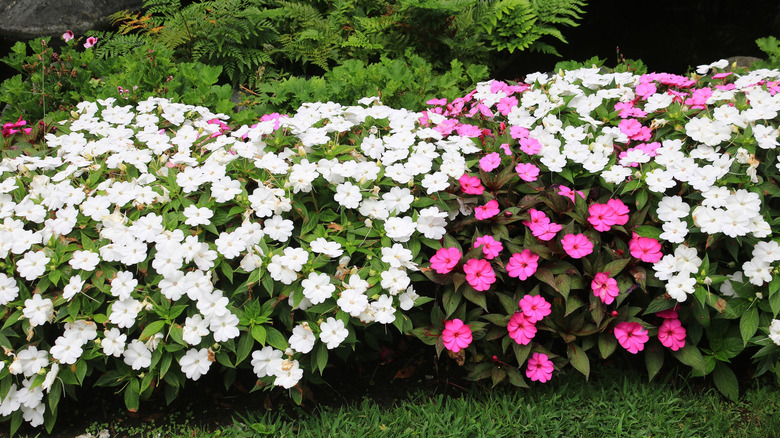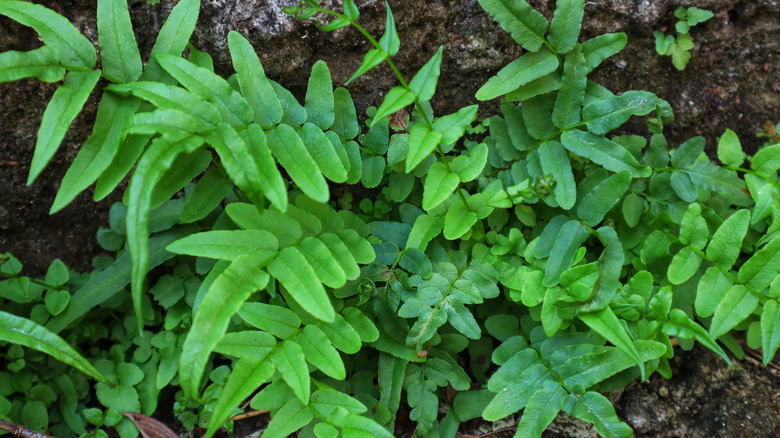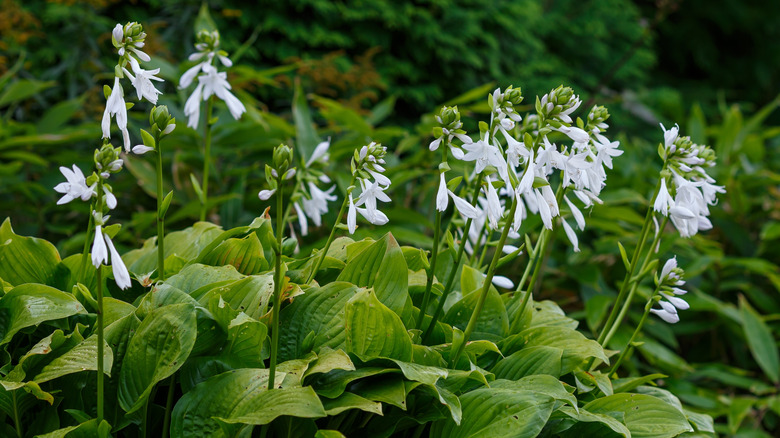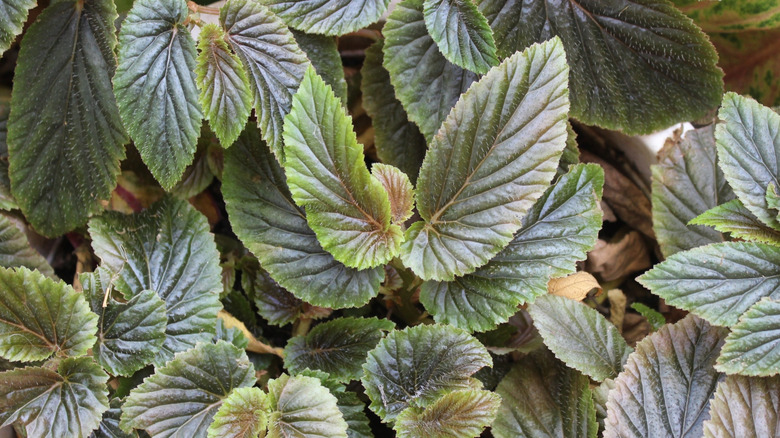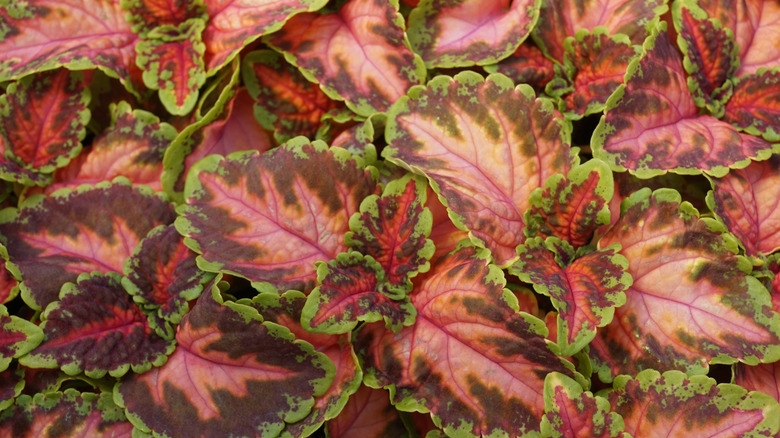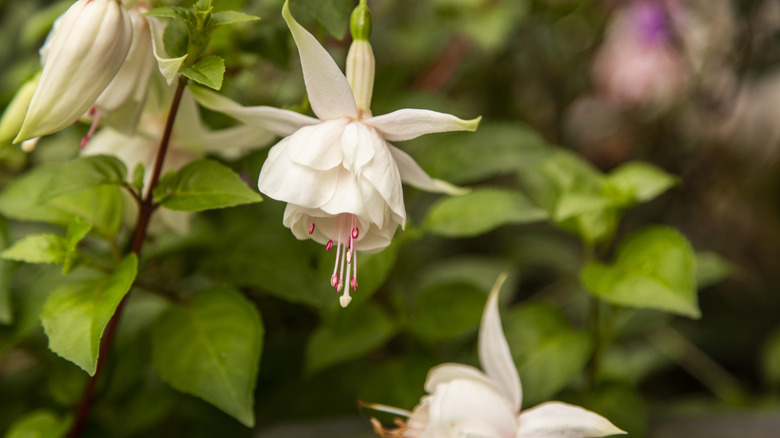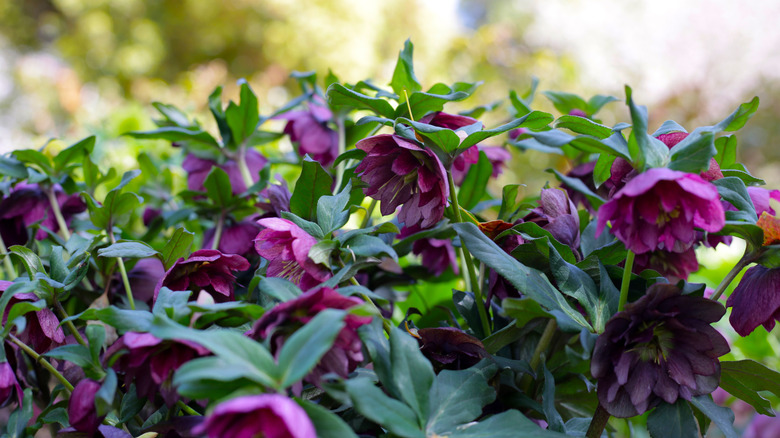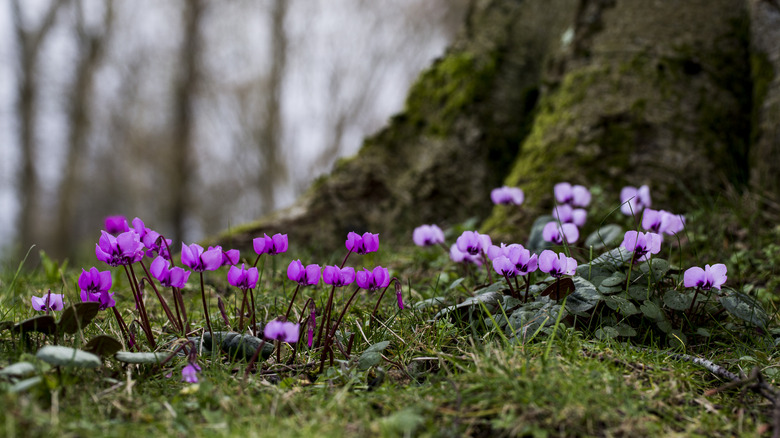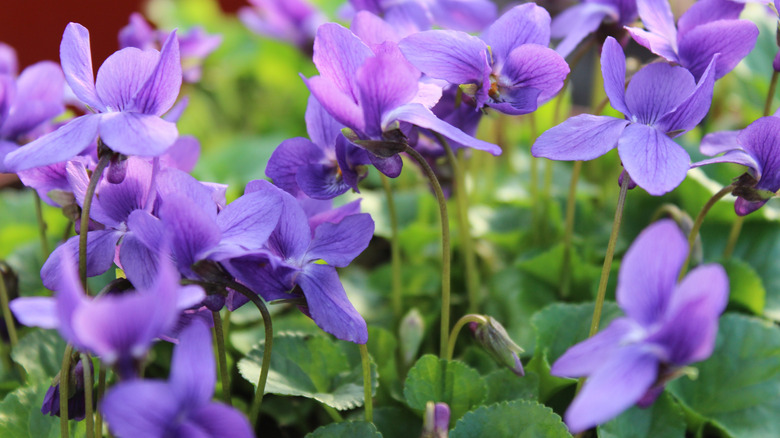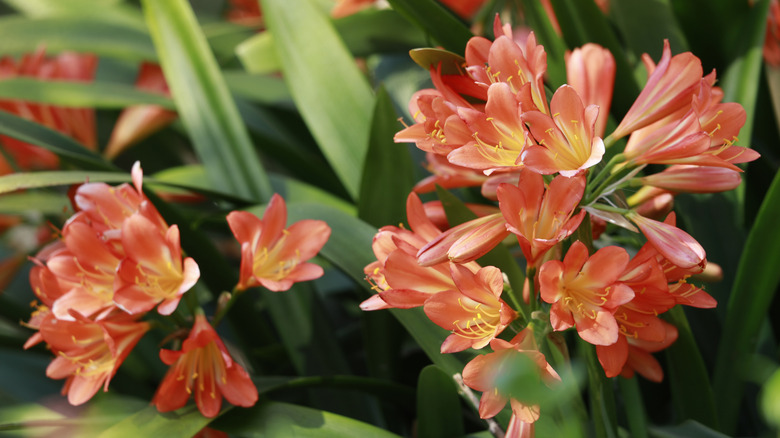9 Shade-Loving Companion Plants That Look Beautiful Next To Impatiens
If you have some shady nooks in your garden, they don't need to look dull and uninteresting. You can fill these dim areas with glorious color by planting some brilliant impatiens that happily thrive in the darker corners of your yard. Impatiens are garden-hardy flowers that are a better replacement for geraniums, which usually don't like shady conditions. Better still, you can take your floral display to even greater heights by adding some shade-loving companion plants that will look absolutely beautiful next to your impatiens to create a pretty and unique flower garden in areas that receive less sunlight.
To find companion plants for your impatiens, look for those plants that like similar conditions. You might be surprised to learn that there's a whole plethora of plants that prefer to grow and thrive in the shade. Some have the most interesting and diverse foliage, while others have stunning blooms that will perfectly complement your impatiens. Some popular companions for impatiens include ferns, hostas, begonias, hellebores, and violas.
Ferns
Ferns are ancient plants commonly found in woodland areas. They love to grow in the shade-filled understory, stocking the area with lush foliage that can add a tropical feel to your flower garden. You can find a wide variety of these plants with fronds in many different shades of green. Some interesting species include Hart's tongue fern (Asplenium scolopendrium), California polypody (Polypodium californicum), and Burgundy lace painted fern (Athyrium 'Burgundy Lace'), which are all hardy in USDA zones 5 to 9.
Hostas
Hostas are prized for their large leaves in a surprising array of colors. There are over 2,000 different cultivars available, so you'll have no trouble finding one or more that you can plant alongside your impatiens. Choose ones of a similar height to your flowers, so those large leaves don't overshadow your brightly colored blooms. Hostas grow as perennials in USDA hardiness zones 3 through 9. Hosta 'Halcyon' has blue-green leaves and showy lilac, bell-shaped blooms. The plantain lily (Hosta plantaginea) has lime green leaves and delightfully fragrant white, trumpet-shaped flowers, perfect for cutting.
Begonias
Begonias are the perfect companion for your impatiens with their glossy, green leaves and attractive blooms in shades of yellow, orange, pink, red, and white during summer and fall. These shade-loving plants are perennial in zones 10 through 11 but can be grown as annuals in other regions. You'll also find that there are some eye-catching cultivars like the angel wing Begonia (Begonia 'Argenteo-guttata'), which has outstanding green leaves with silver markings and beautiful pink or red floral cymes. For colder regions in zones 6 through 9, the hardy begonia (Begonia grandis) is a good choice.
Coleus
You'll love the wide variety of cultivars available for the Coleus species (Coleus scutellarioides), which grows as a perennial in zones 10 through 11 but can be grown as an annual in other regions. While this plant doesn't appear on any state invasive lists, it might be a problem in Hawaii, so check with your local municipality to allay any concerns. To complement your impatiens, look for hybrids with interesting leaf colors such as 'ColorBlaze Wicked Witch', which has stunning maroon colored leaves with lime green margins, or 'Wizard Coral Sunrise' with peachy-colored leaves that have attractive dark markings.
Fuchsia
There are many fuchsia hybrids (Fuchsia x hybrida) that grow comfortably in the shade and will fill your shade garden with pollinator-attracting blooms from spring through fall. These plants are hardy in zones 10 through 12 but are easily propagated from stem cuttings to overwinter indoors in areas with cold winters. The brightly-colored tubular flowers will even attract hummingbirds, so you might want to investigate some beautiful varieties of fuchsia to grow in your garden to attract the pretty hummers. Some unusual cultivars include 'Annabel' with white flowers, and 'Blaze Away', which has rose-colored blooms.
Hellebores
Gardeners in cooler regions would be familiar with the winter rose or Helleborus, which has dark green, leathery leaves with deeply serrated margins. This popular shade-loving plant thrives in zones 5 through 8 and displays outstanding cup-shaped blooms on tall stems that tower above the foliage. The flowers appear in late winter and will create a stunning display among your impatiens, which won't be ready to bloom until summer. You'll find an outstanding array of cultivars like Helleborus x glandorfensis 'Early Red', which has deep red blooms, and Helleborus x hybridus 'Confetti Cake' with beautiful multi-colored ones.
Cyclamen
Another species that will provide floral color while you're waiting for your impatiens to bloom is cyclamen, which flowers from fall to spring. This means that by planting these two species together, you could have colorful flowers all year round. You'll also be pleased to know that cyclamen are hardy in zones 4 through 11, depending on the species, making them highly versatile. In colder regions of zone 8 and below, look for cultivars in the Cyclamen hederifolium, Cyclamen cilicium, and Cyclamen coun species, while hybrids in the Cyclamen persicum species are better suited to zones 9 through 11.
Violas
For a shade-loving ground cover around your impatiens, you simply can't beat violas. There are over 500 species in this genus, so you're sure to find a few that are perfect for your climatic zones from 1 through 10. Apart from their often heart-shaped leaves, which are attractive in their own right, these plants also have dainty flowers in a whole array of colors, mainly blue, purple, or white. One of the more outstanding species is the sweet violet (Violet odorata), which has pretty purple blooms that are sweetly scented.
Clivia
Although only hardy in zones 9 through 11, the natal lily (Clivia miniata) would make a striking companion to your impatiens. This plant will fill your shade garden with bright orange blooms from late winter to spring, while your impatiens are just waking up from their winter slumber. The long, green strappy leaves will also add an interesting contrast after these plants have finished blooming, and your impatiens start to fill your garden with colorful flowers. If you've never tried growing these, you might want to explore some tips for growing clivia plants in your shade garden.
